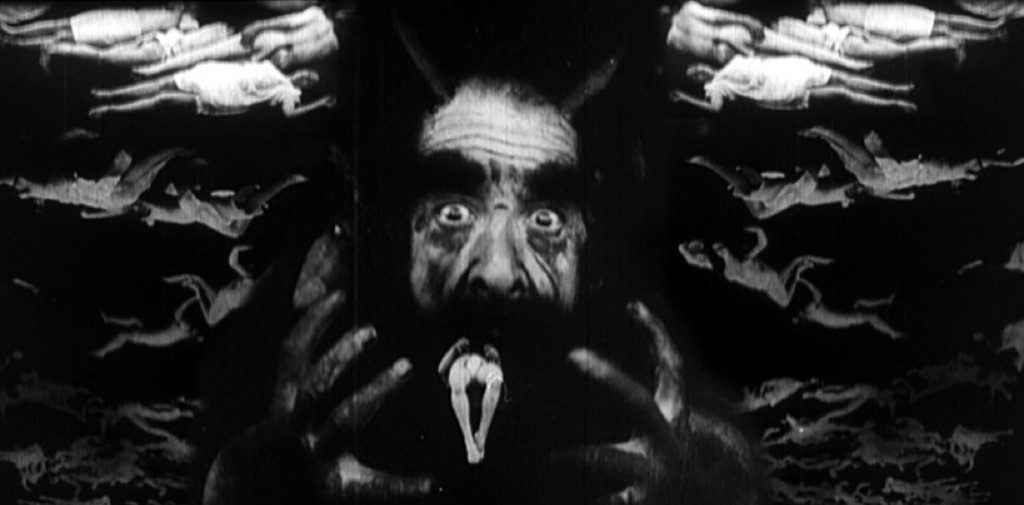[Most Recent Entries] [Calendar View]
Thursday, July 8th, 2021
| Time | Event |
| 8:00a | Watch the Tate Modern Restore Mark Rothko’s Vandalized Painting, Black on Maroon: 18 Months of Work Condensed Into 17 Minutes 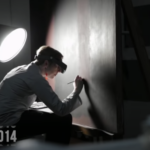 
In 2012, a Russian artist calling himself Vladimir Umanets wrote his name and the words “A potential piece of yellowism” in black marker on the corner of Mark Rothko’s 1958 canvas Black on Maroon. The damage to the painting, housed at the Tate Modern since 1970, was substantial, and it turned out to be one of the museum’s most challenging restoration projects, as well as one of its most successful — “far more successful than any of us dared hope,” said Tate director Nicholas Serota. The painting went back on display in May of 2014. Due to Rothko’s layered technique, the painting’s “surface is really delicate and it turned out that most of the solvent systems that could dissolve and remove the ink could potentially damage the painting as well.” Patricia Smithen, the Tate’s head of conservation, told The Guardian. The video above from the museum shows the art and science that went into restoring the famous work, an eighteen-month-long process that involved some reverse engineering from a canvas donated by the Rothko family. Black on Maroon seemed like an odd choice for a protest, as a blogger at Art History Abroad wrote the following day: “‘Why Rothko?’. His paintings [are] often criticised by those who don’t favour their abstraction, but rarely deemed politically or socially motivated to a point that they might provoke vandalism.” The presence of Black on Maroon and other Seagram Murals at the Tate, in fact, mark an act of protest by Rothko himself (who committed suicide the day the paintings arrived at the London museum). The Seagram Murals were originally commissioned for the Four Seasons restaurant in the Seagram building in New York, designed by Mies van der Rohe and Philip Johnson. Seven paintings were commissioned, Rothko made 30. He reportedly told Harper’s editor John Fischer he wanted to create “something that will ruin the appetite of every son-of-a-bitch who ever eats in that room.” When he finally got the chance to dine at the completed restaurant, he was disgusted, withdrew his work, and returned his commission, writing, “it seemed clear to me at once that the two were not for each other.” He spent the next decade thinking about how and where to display the paintings. Umanets did not seem to care much about the history of the murals in the Tate’s Rothko Room and claims his choice had no meaning. “I didn’t single out Rothko to make my statement,” he wrote in a public letter of apology published after he spent a year and a half in prison. “I would have done the same had the artist been Damien Hirst or Tracey Emin. It was a spontaneous decision and nothing personal.” Likewise, his Dada-esqe “Manifesto of Yellowism” outlines a program with a distinct lack of concern for specificity and a vaguely satirical desire to flatten art into one color, one purpose, one meaning. Even as he publicly abjured his act of protest (maybe by order of the court?), Umanets also expressed a genuine concern for the future of art, “Art has become a business, which appears to serve only the needs of the art market. As a result the art world no longer has radical thinkers and polemicists willing to scythe new and different pathways. Everyone is playing safe.” He might have made his point more clearly by going after Jeff Koons. Rothko was a radical thinker, and his Seagram Murals represent a final refusal to compromise with the demands of the art market. Related Content: A Short Documentary on Artist Jeff Koons, Narrated by Scarlett Johansson Watch an Art Conservator Bring Classic Paintings Back to Life in Intriguingly Narrated Videos The MoMA Teaches You How to Paint Like Pollock, Rothko, de Kooning & Other Abstract Painters Josh Jones is a writer and musician based in Durham, NC. Follow him at @jdmagness Watch the Tate Modern Restore Mark Rothko’s Vandalized Painting, Black on Maroon: 18 Months of Work Condensed Into 17 Minutes is a post from: Open Culture. Follow us on Facebook and Twitter, or get our Daily Email. And don't miss our big collections of Free Online Courses, Free Online Movies, Free eBooks, Free Audio Books, Free Foreign Language Lessons, and MOOCs. |
| 11:00a | Watch Footage of the Allies Rolling Through a Defeated German Town in April, 1945: Restored & Colorized with AI   Early April, 1945. The Soviets are closing in on Germany, liberating Warsaw, Krakow, and Budapest. American troops have crossed the Rhine. Adolf Hitler won’t live to see May. World War II is coming to an end. This footage, taken from film by American troops in and around Nordhausen, Germany, shows the wreckage of a defeated nation. Enhanced by AI into 60fps, with color and atmospheric sound added, it’s another of YouTube’s increasing library of old footage that looks like it was shot yesterday. (Unfortunately, the video has changed the film’s ratio, widening all the humans in it.) The original film—you can watch it here at the United States Holocaust Memorial Museum—has an interesting history itself. Shot by a member of the US Army Signal Corps, the film was kept in the National Archives and Records Administration until being unearthed by Douglas Hackney while researching his grandfather who served in the war. (Apparently he is seen in one of the other films in the original collection.) The digitization was then gifted to the Holocaust Memorial Museum. The 60fps version is assembled from several reels. We see fighting in a forest outside Nordhausen, then a gathering of captured Nazi soldiers, then troops celebrating with freed prisoners with some shots of liquor, a bit of morning downtime, and the effects of allied bombing. Nordhausen was the sight of the Dora-Mittelbau concentration camp, built in August of 1943 so Nazis could use its prisoners as slave labor, digging tunnels into the nearby hillside for German factories related to the V-2 rocket program. According to the Holocaust history website, remember.org:
One can hope these 60fps enhanced videos continue to be uploaded to YouTube. Personally, the colorization adds little, but as a window into time really not that long ago (and with neo-Nazis still kicking around) we need reminders of where it can all lead without our vigilance. Related Content: Real D-Day Landing Footage, Enhanced & Colorized with Artificial Intelligence (June 6, 1944) Dramatic Footage of San Francisco Right Before & After the Massively Devastating Earthquake of 1906 Watch the Only Known Footage of Anne Frank Ted Mills is a freelance writer on the arts who currently hosts the Notes from the Shed podcast and is the producer of KCRW’s Curious Coast. You can also follow him on Twitter at @tedmills, and/or watch his films here. Watch Footage of the Allies Rolling Through a Defeated German Town in April, 1945: Restored & Colorized with AI is a post from: Open Culture. Follow us on Facebook and Twitter, or get our Daily Email. And don't miss our big collections of Free Online Courses, Free Online Movies, Free eBooks, Free Audio Books, Free Foreign Language Lessons, and MOOCs. |
| 2:00p | Watch L’Inferno (1911), Italy’s First Feature Film and Perhaps the Finest Adaptation of Dante’s Classic   In its second decade, cinema struggled to evolve. The first films by the Lumière Brothers and Thomas Edison were short and gimmicky – shots of trains racing towards the screen, couples kissing and cute kittens getting fed. A quick rush. A bit of fun. Its creators didn’t see much past the novelty of cinema but then other filmmakers like Georges Méliès, Edwin S Porter, Alice Guy-Blaché and D.W. Griffith started injecting this new medium with elements of story. It started aspiring towards art. To this end, filmmakers started to expand the canvas on which they created. Films that were just two to eight minutes lengthened in duration as their stories grew in complexity. The first feature-length movie came in 1906 with the Australian movie The Story of the Kelly Gang. In 1915, D.W. Griffith premiered his racist drama The Birth of a Nation, which crystallized film language and proved that longer movies could be financially successful. In between those two movies came L’Inferno (1911) – perhaps the finest cinematic adaptation of Dante’s Inferno out there and the first feature-length Italian movie ever. Like Griffith, the makers of L’Inferno – Francesco Bertolini, Adolfo Padovan and Giuseppe de Liguoro – sought to raise cinema to the ranks of literature and theater. Unlike Griffith, they didn’t really do much to forward the language of cinema. Throughout L’Inferno, the camera remains wide and locked down like the proscenium of a stage. Instead, they focused their efforts on creating gloriously baroque sets and costumes. Much of the film looks like it was pulled straight from Gustave Dorè’s famed illustrations of The Divine Comedy. Yet seeing a picture in a book of a demon is one thing. Seeing it leap around lashing the naked backs of the damned is something else entirely. If you were ever tempted by the sin of simony, you’ll think twice after seeing this film. L’Inferno — now added to our collection of 1,000+ Free Movies Online — became both a critical and commercial hit worldwide, raking in over $2 million (roughly $48 million in today’s money) in the US alone. “We have never seen anything more precious and fine than those pictures. Images of hell appear in all their greatness and power,” gushed famed Italian novelist and reporter Matilde Serao when the film came out. American film critic for The Moving Picture World, W. Stephen Bush, was even more effusive:
Of course, the film’s combination of ghoulishness and nudity made it ripe to be co-opted by shady producers who had less that lofty motives. Scenes from L’Inferno were cut into such exploitation flicks as Hell-O-Vision (1936) and Go Down, Death! (1944). You can watch the full movie above. Be sure to watch to the end where Satan himself can be seen devouring Brutus and Cassius. Related Content: Gustave Doré’s Haunting Illustrations of Dante’s Divine Comedy A Free Course on Dante’s Divine Comedy from Yale University Why Should We Read Dante’s Divine Comedy? An Animated Video Makes the Case What David Lynch Can Do With a 100-Year-Old Camera and 52 Seconds of Film Jonathan Crow is a Los Angeles-based writer and filmmaker whose work has appeared in Yahoo!, The Hollywood Reporter, and other publications. You can follow him at @jonccrow. Watch L’Inferno (1911), Italy’s First Feature Film and Perhaps the Finest Adaptation of Dante’s Classic is a post from: Open Culture. Follow us on Facebook and Twitter, or get our Daily Email. And don't miss our big collections of Free Online Courses, Free Online Movies, Free eBooks, Free Audio Books, Free Foreign Language Lessons, and MOOCs. |
| << Previous Day |
2021/07/08 [Calendar] |
Next Day >> |



